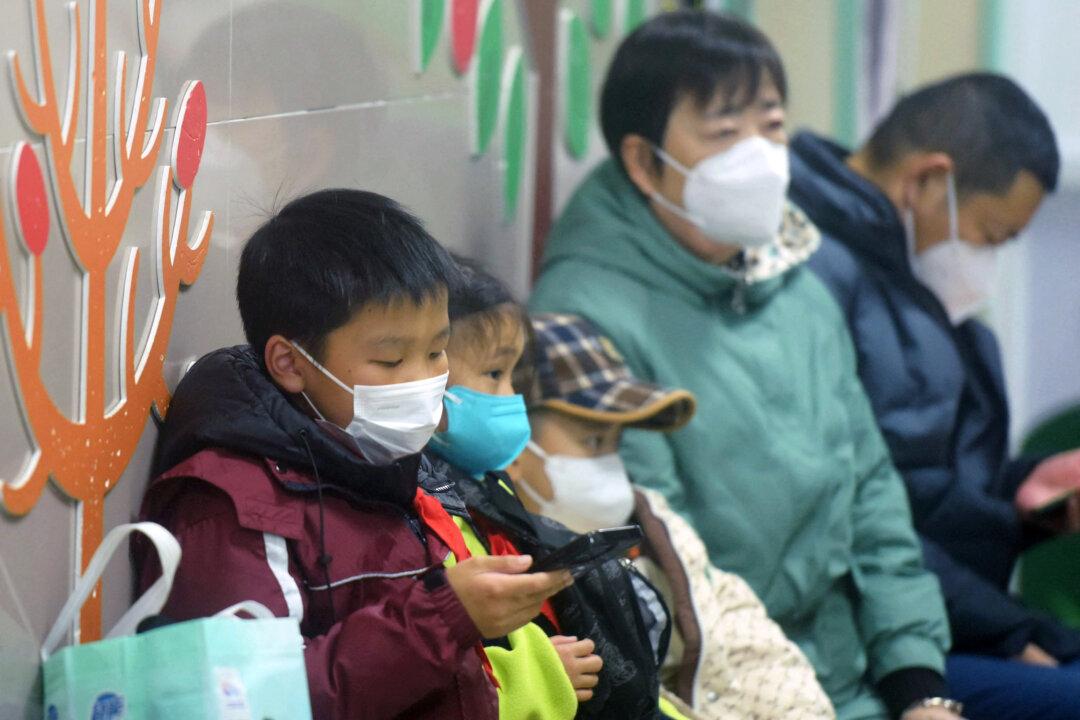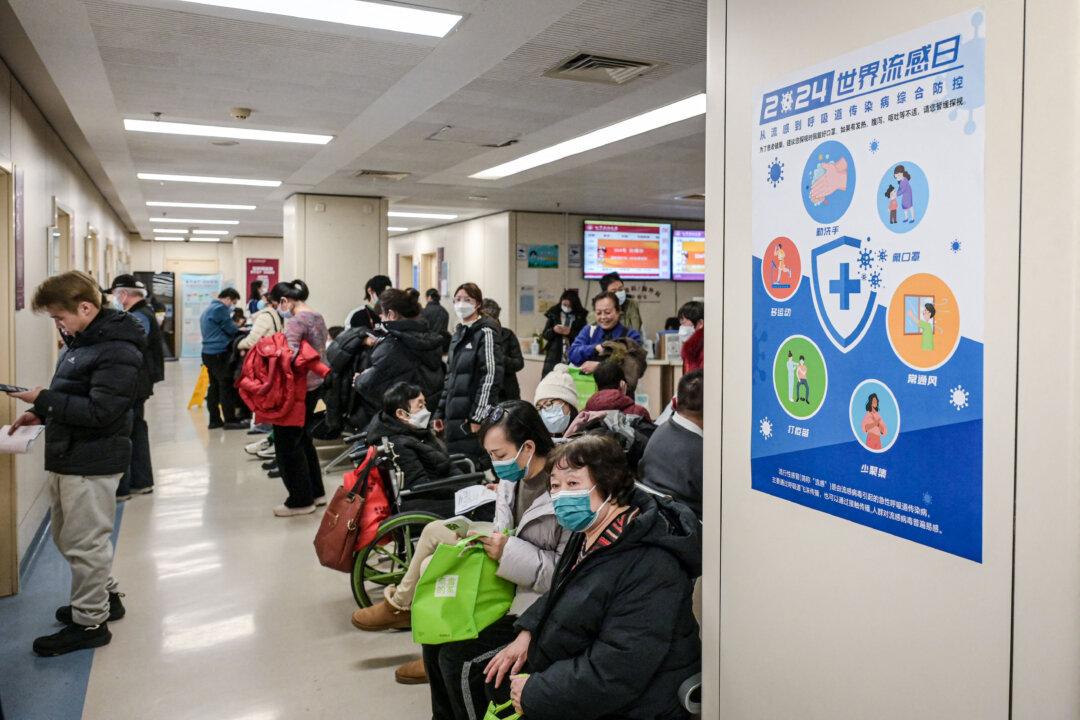Many towns in China’s Hebei Province have sustained severe flooding due to the Chinese communist regime’s deliberate use of the locales as a “moat” to protect China’s capital city of Beijing and the new political hub of Xiong’an, following the strongest storm in northern China in years.
The storm, super typhoon Doksuri, reached northern China on July 29 and was the strongest to hit Beijing and the surrounding areas in Hebei Province in 140 years, triggering flash floods and landslides.
Provincial officials said on Aug. 3 that the floodwaters might take a month to completely recede. According to state media CCTV, modeling estimated that another 300 million to 400 million cubic meters of water needed to flow to the ocean.
On July 31, flash floods were reported in the municipality of Beijing, a centrally administered region surrounded by Hebei Province, and by Aug. 1, eight reservoirs in the city began discharging water at the same time.
Li Guoying, China’s water resources minister, on Aug. 1 publicly required “ensuring the absolute safety of capital Beijing, Daxing International Airport, and Xiong’an New Area against the flood.” Ni Yuefeng, head of Hebei Province, pledged on state media on Aug. 2 that in order to reduce the pressure on Beijing’s flood controls, the province would resolutely be the “moat” for the capital. The official statements sparked public anger.
A staff member from the Zhuozhou Emergency Management Bureau conceded on July 31 that flood discharge from Beijing was one of the reasons for the significant rise in water levels in the regional city, mainland Chinese outlet Southern Weekend reported on Aug. 1.
Calls for Help
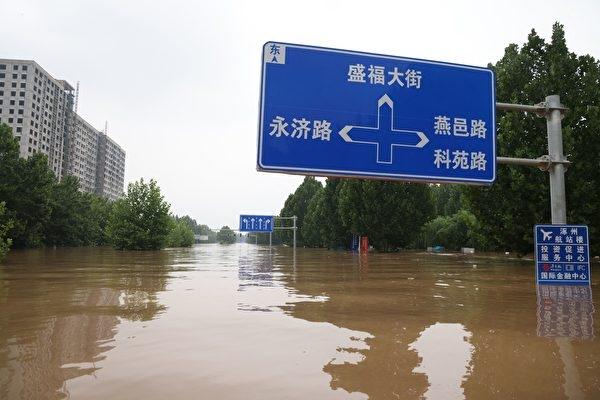
Since Aug. 1, residents in Zhuozhou have been sending urgent messages for help on social media.
Local residents told the Chinese language Epoch Times that on Aug. 1, all of Zhuozhou was inundated by the floodwater discharge. In addition to communications, water, electricity, and transportation were cut off, they said.
By Aug. 2, floodwaters had reached Bazhou, which is about 130 kilometers (about 80 miles) downstream from Zhuozhou and 40 kilometers (almost 25 miles) upstream of the major city of Tianjin, destroying many homes and properties, and leaving tens of thousands homeless.
Hebei’s ‘Man-Made’ Disaster
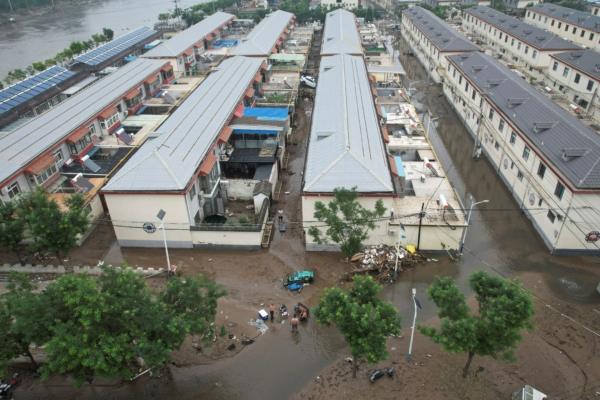
Wang Weiluo, a hydrology expert now based in Germany, told The Epoch Times on Aug. 3 that if authorities in Beijing hadn’t diverted water to Zhuozhou to protect the new Xiong’an district, the rural city and its surrounding regions wouldn’t have experienced such disastrous flooding.
Mr. Wang said that, while floodwater discharge from the reservoirs in Beijing’s Fangshan and Mentougou districts was needed to prevent the dams from collapsing, after Aug. 1, “eight reservoirs in Beijing began to release flood water” in controlled discharges.
He explained that the water from Beijing usually has two routes to flow to the ocean—neither of which passes through Zhuozhou.
“One ... flows down from Yongding River to Langfang in Hebei, then passes through Tianjin to the Bohai Sea; the other one flows down from the Daqing River, usually passing through Xiong’an to Baiyangdian, and then enters the Bohai Sea,” he said.
Mr. Wang added that in order to protect Xiong’an, the new political hub planned by Chinese Communist Party (CCP) leader Xi Jinping, authorities ordered the creation of a new but less efficient flood storage area in Zhuozhou to reduce pressure on Xiong’an.
“That’s why the official said that the flood discharge will last for another month, and you should not go home for one month. It doesn’t mean that you can go home when the rain stops,” he said.
Mr. Wang estimated that some other areas in Hebei Province beyond Zhuozhou like Baoding (about 60 miles to the southwest), and even Shijiazhuang (about 150 miles to the southwest) and Xingtai (about 125 miles to the south), may have even worse flooding than Zhuozhou. The reason why Zhuozhou has received so much attention is that locals there posted news of the flooding on social media first, he said—before the CCP’s internet censors kicked in.
On Aug. 5, more than 600,000 of Baoding’s 11.5 million residents were ordered to evacuate.
Public Anger
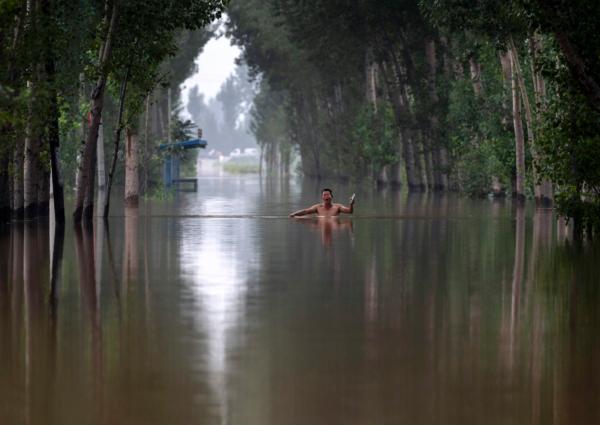
Anger has been building among the locals affected, as responsible officials and governmental aid continue to be absent, along with a lack of transparency about the extent of the flooding.
On Aug. 4, posts calling for the attention of state officials went viral on Chinese social media. One post reads: “Urgently looking for the mayor and the CCP’s Party secretary of Zhuozhou Ci: We have lost contact with them for many days, and Zhuozhou is suffering unprecedented disasters, and the people need to know the truth!”
Another says: “Missing People Notice: government officials haven’t been seen since the disaster happened. Where are the mayor and the Party secretary? Where is the head of the emergency management bureau? People hit by the disaster all depend on independent rescue teams and other ordinary people to provide meals and bedding. What about the people in the government departments? Have they all lost contact?”
Bazhou Villagers’ Protest
On Aug. 4, many Bazhou residents expressed outrage on social media over news reports on CCTV, which they said were falsely reporting about the flood situation.“We are hit by flood discharge, not rainfall!” one post read.
The CCTV reports from Bazhou had said that “some villages were affected by rainfall“ and had ”logged water,” with several people trapped.
On Aug. 5, many local villagers went to the Bazhou city government to protest.
Videos posted on social media show villagers holding up a banner in front of government offices reading “Give me back my home. It’s caused by flood discharge, not by the rain!”
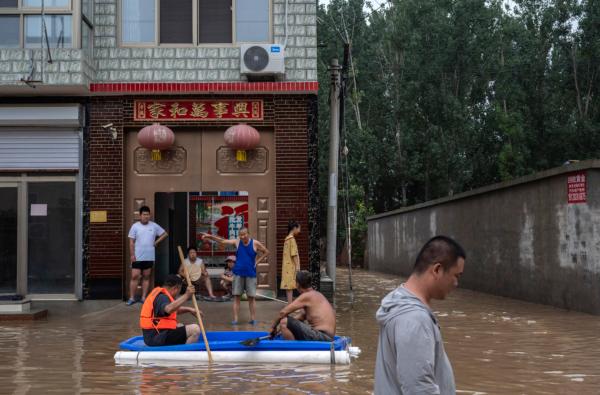
On Aug. 5, Zhuozhou resident Mr. Chen told The Epoch Times: “Five-hundred policemen from the Hebei Armed Police Corps entered Zhuozhou today. They have taken over all the rescue work. The civilian volunteer rescue teams were asked to evacuate, and the rescue supplies from the central government had just arrived.
“Previously, the supplies were all from the people, and the ordinary people have tried their best to collect supplies from everywhere. It is completely the people helping each other.
“The volunteer rescuers saw dead people everywhere in Mafang village in the Qingliang Temple area of Zhuozhou city. The officials are afraid that civilian rescuers will post pictures and videos of the real situation of the casualties on social media.”


